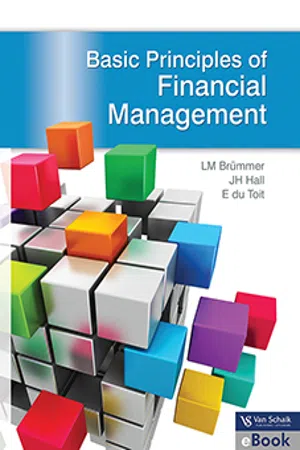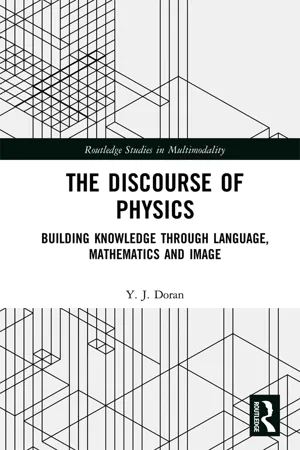Expressions and Formulas
Expressions in mathematics are combinations of numbers, variables, and operations, while formulas are specific types of expressions that represent relationships or rules. Expressions can be evaluated to produce a single value, while formulas are used to solve specific problems or calculate specific quantities. Both expressions and formulas are fundamental to mathematical problem-solving and modeling.
3 Key excerpts on "Expressions and Formulas"
- Caryl Lorandini(Author)
- 2021(Publication Date)
- Barrons Educational Services(Publisher)
...If we are writing an expression about dogs, you may want to use the letter d to help you associate the two. An expression that results in a number is a numeric expression. An expression that contains a variable is an algebraic expression. An algebraic expression can have the variable substituted and become a numeric expression. An expression does not contain any relation symbols such as <, >, ≤, ≥, =, or ≠. x + 2 x is the unknown or variable; 2 is the constant 3 y 3 is the coefficient; y is the variable Using symbols is like writing in shorthand. Capital letters are reserved for formulas. A = lw The capital A represents the area. The l is for length and the w is for width. This is much shorter than having to write out “area of a rectangle is the product of the length and the width.” V = e 3 The capital V is for volume. The e is for edge. Again, this is much shorter than writing out “volume of a cube is the cube of the edge.” EXAMPLE 5.1 Determine and state whether the term is a monomial, binomial, or trinomial. Classify each part as coefficient, variable, exponent, or constant. 1) 2 x 2) 2 x 3 3) 3 x + 7 4) 4 x 2 + 21 x – 3 5) 4 a 2 b 3 6) 5 a – b SOLUTIONS 1) Monomial, 2 is a coefficient, x is a variable 2) Monomial, 2 is a coefficient, x is a variable, 3 is an exponent 3) Binomial, 3 is a coefficient, x is a variable, 7 is a constant 4) Trinomial, 4 and 21 are coefficients, x is a variable, 2 is an exponent, –3 is a constant 5) Monomial, 4 is a coefficient, a and b are variables, 2 and 3 are exponents 6) Binomial, 5 is a coefficient, a and b are variables 5.2 Writing Expressions Expressions are written using variables, numbers, and. operation signs. More complicated expressions will contain parentheses or other grouping symbols. It is important to know key phrases for the operations. Many times words have the same meaning whenever they are used in a statement. However, be careful to always look for context clues and negations...
- eBook - ePub
- Brümmer LM, Hall JH, Du Toit E(Authors)
- 2017(Publication Date)
- Van Schaik Publishers(Publisher)
...Furthermore, a service rendered may be either work-in-process or a finished product. For example, while you are having your hair cut (a service), the situation represents goods or work-in-process. When you walk away after the haircut, the situation represents a finished product. Equations and formulas The symbolic expression of a financial calculation is usually divided into two parts by an “equal” sign (=). The equal sign thus equates the two parts, and hence we derive the term equation – that is, making both sides equal. A formula, on the other hand, describes a process for creating a desired result, for example the process of weighing, mixing and baking ingredients such as flour and eggs to produce a cake. Since calculations also in a sense describe the process of calculation, the terms “formula” and “equation” have come to be used interchangeably in certain contexts. For the sake of convenience in this book, we shall overlook the subtle differences between these two terms and use only the term “formula” to describe calculations and processes. Capital Although capital is essentially a financial term, it also has an economic connotation, and this is where some confusion arises. Furthermore, capital has different meanings for different people. For some, it simply refers to savings (i.e. delayed or deferred spending); for others, it refers to assets such as cattle, machinery and vehicles; and yet for others, it includes abstract concepts such as personal talents and abilities. In an economic sense, capital is one of the four factors of production that an organisation must possess before it can begin to operate. Briefly, these are as follows: Land and buildings on and in which to operate. Labour, which means the offices and workshops, and which includes both supervisors and labourers or manual workers. Capital, which includes both the means of production and the saved funds for buying the means of production...
- eBook - ePub
The Discourse of Physics
Building Knowledge through Language, Mathematics and Image
- Y. J. Doran(Author)
- 2017(Publication Date)
- Routledge(Publisher)
...1968). Each expression in turn consists of symbols: 1 the expression on the left contains a single symbol F, whereas the expression on the right consists of two symbols, 0.5 and 3, related by the multiplication operator ×. The organisation of the statement into expressions and symbols is shown by the following: (3.2) The unit’s expression and symbol are presented at this stage so that we have some basic terminology to discuss mathematical statements. Further into the discussion, we will formally derive symbols in relation to axis. We will also show that expression as a unit is not needed in the formalised grammar; however, at this stage, it provides a useful term for each side of the statement. To begin, we will build up from the smaller of these units, the symbol. Example (3.2) shows that symbols can occur within expressions either on their own or in relation to other symbols. If they occur with other symbols, the relations between them, known as operators, can be of various types: multiplication ×, division ÷, addition +, subtraction −, roots √ and powers shown by a superscript, x 2. The relations set up occur between two symbols or groups of symbols. As O’Halloran (2005) points out, there is no limit to the number of relations and symbols that can occur within an expression. This means that symbols in expressions are indefinitely iterative. The expression on the right hand side of (3.3), for example, shows four symbols (3, z, 9 and 2) related by three operators (×, −, +). (3.3) y = 3 × z − 9 + 2 Continuing O’Halloran’s argument, in expressions there is no need to postulate a central entity that functions analogously to the Medium in an English clause. Each operator must necessarily have a symbol or group of symbols on both sides of it...


